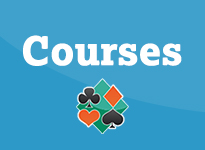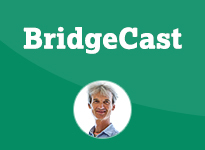
Book a Course
View all the latest courses going on at the bridge club and book yours now...Andrew:
Can you afford to trump high?
Extra trump tricks are made when you trump in the short-trump hand. Assuming dummy has fewer trumps than you, that hand will be dummy. So look for a side-suit in which dummy has fewer cards (0, 1, or 2) than you. Should there be such a suit, then delay drawing trumps, and void dummy of that suit, preparatory to ruffing (trumping) your extra card(s).
Question: Should you then ruff high, or low?
There is no simple answer, but if you can afford to ruff high (because you have a sufficient number of other high trumps with which to draw their trumps subsequently), then you should ruff high. Why take the risk that they might overruff, when you do not need to take that risk?
|
South Deals None Vul |
|
||||||||||||||||||||||||||||||
|
|
|
|||||||||||||||||||||||||||||
|
|||||||||||||||||||||||||||||||
| West | North | East | South |
| 2 ♣1 | |||
| 2 ♥2 | Pass3 | Pass | 2 ♠4 |
| Pass | 4 ♠5 | All pass |
|
What happened
Winning ♦ J lead, declarer correctly identified the need to ruff a heart in dummy, holding more hearts in hand. He cashed ♥ A and led ♥ 3. West won ♥ K, felling East’s ♥ Q, then led ♥ 10. Declarer ruffed - fatally - with ♠ 7, but East could overruff with ♠ 9. With two defensive club tricks to come, that meant down one.
What should have happened
Sometimes the danger of an overruff is not readily apparent. Here it was staring declarer in the face - West had bid hearts, and East had followed with ♥ Q on the previous round.
Lead ♥ A and ♥ 3 at Tricks Two and Three (as before). But when, after winning ♥ K, West perseveres with ♥ 10, ruff with ♠ Q (key play). This prevents the overruff, and can be afforded (unless trumps are 5-0) because you have ♠ AKJ10 in hand. Cross to those ♠ AKJ10, drawing East’s trumps, and your two remaining top diamonds bring the trick tally to ten. Game made.
If you remember one thing...
Trump high if you can afford to.





